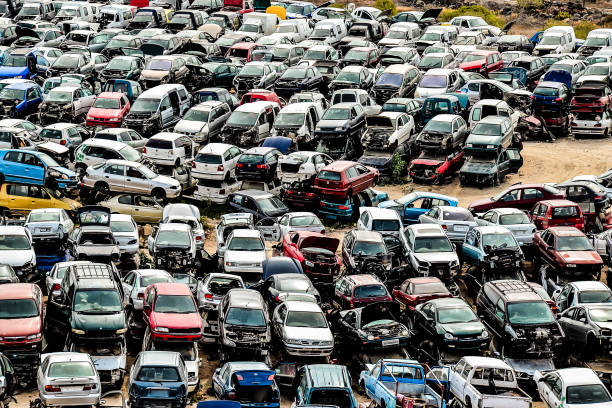Environmentalists from the Gandia campus of the Universitat Politècnica de València study the decontamination of vehicles damaged in the DANA.
A team from the Gandia campus of the Universitat Politècnica de València (UPV) is studying the decontamination of accident vehicles from the DANA, managed by the Generalitat and local councils.
“Natural catastrophes leave in their wake numerous consequences that cannot be solved through normality, but through emergency measures. This is the case of the DANA of October 29, which, among other things, left more than 120,000 damaged vehicles in its wake. These are hazardous waste and must be treated as such,” says Maite Sebastiá, a researcher and professor at the Degree in Environmental Sciences at the UPV Gandia Campus.
As Sebastiá explains, the public administration, “aware of the time required for the procedures in a normal situation, collaborated to look for exceptional solutions”. The Albal City Council requested the General Directorate of Environmental Quality and Education of the Regional Ministry of Environment, Infrastructure and Territory of the Generalitat Valenciana to install a pilot plant in the Braç del Vicari industrial estate, by means of a responsible declaration, in order to be able to decontaminate these vehicles.
José Andrés Sanchis, also a professor of the Environmental Sciences Degree at the Gandia campus, explains that before they can be recycled, wrecked vehicles have to be drained of engine fuel, oils and other fluids (antifreeze, coolant, brake and clutch fluids).
In this context, Miguel Ángel Méndez, student of the Degree in Environmental Sciences, is developing his final degree work entitled “Management of affected vehicles in natural catastrophes: treatment of vehicles affected by natural catastrophes – in situ or relocation? Case study DANA Valencia”. The aim of the study is to analyze whether these temporary facilities could be extrapolated to other municipalities and serve as a model for future emergencies. The work is tutored by Maite Sebastiá and José Andrés Sanchis, also by Jorge Blanco, General Director of Environmental Quality and Education of the Generalitat.
In addition to the decontamination proposal in situ The Generalitat, in collaboration with the municipalities, promoted a crash plan to remove almost all the vehicles affected by the floods. Together with authorized treatment centers (CAT) throughout Spain, the removal of all vehicles was managed and a system was created to identify them.
“Being prepared to effectively manage the waste generated by natural disasters is essential. Foresight that requires the local authorities responsible for the affected area, in coordination with the rest of the stakeholders, to plan in advance the set of responses to be implemented in the emergency and early recovery phases. The Bachelor’s Degree in Environmental Sciences prepares professionals trained to respond to these planning and response needs to prevent environmental damage from being aggravated”, concludes Maite Sebastiá.

